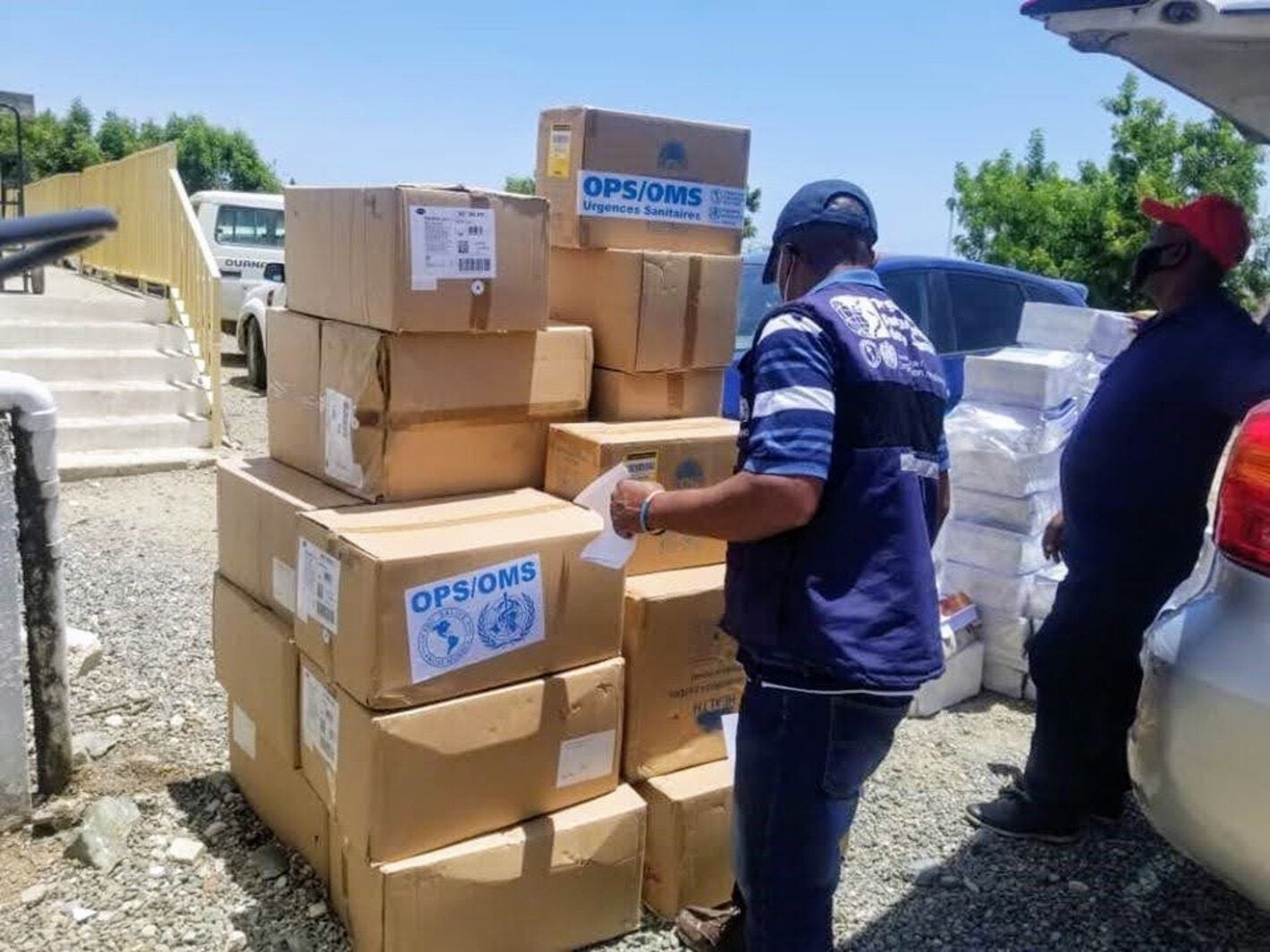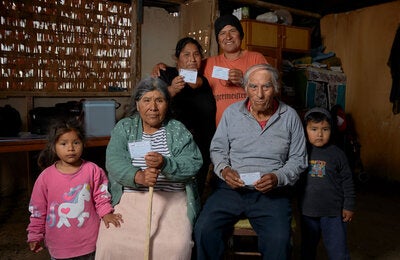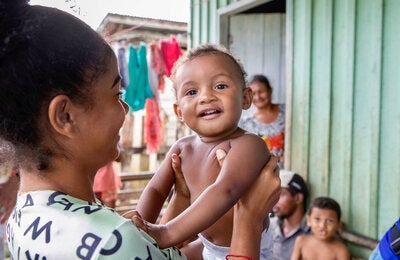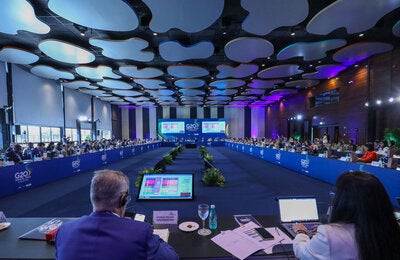
Rapid mobilization, logistical support, and technical expertise were provided to countries from the start
Washington, D.C., July 2, 2020 (PAHO) — The Pan American Health Organization is continuing and accelerating work to support countries throughout the Americas in dealing with the serious health and social effects of the COVID-19 pandemic. In a new report, PAHO outlined details of the rapid mobilization and technical support at the core of its extensive emergency response since January.
COVID-19 has now spread to all 54 countries and territories in the Americas, with some 5 million cases and more than 244,000 deaths reported to date. “The epicenter of the COVID-19 pandemic has shifted to the Region of the Americas,” the new PAHO report says. The United States of America and Brazil combined account for 75% of all cases and 74% of all deaths currently reported in the Region, it adds.
This 77-page report analyzes the epidemiological situation both by regions, including North America, Central America, South America, and the Caribbean, and nationally, giving specifics on PAHO’s response in each country.
PAHO’s regional and country incident management system teams have been providing direct emergency response to Ministries of Health and other national authorities in vital public health areas since the first alert. Specific teams provide support that focuses on coordination in countries, risk communication and community engagement, surveillance and rapid response, points of entry, laboratory capacity, infection prevention and control, clinical management, logistics, maintaining essential health services, and research and development.
Emergency operations help procure equipment
In emergency operations, where PAHO has more than 40 years of experience, the Organization quickly mobilized experts and equipment to respond to COVID-19. PAHO helped procure Personal Protection Equipment (PPE), sending 54 shipments to 26 countries. These vital supplies for health workers included 1.3 million gloves, 1 million surgical and N95 masks, 403,000 gowns and 42,000 goggles for the countries. PAHO’s Panama warehouse is serving as a logistics hub, receiving and shipping out PPE and other life-saving supplies. Its procurement team is not only buying supplies, but also coordinating with WHO and UN agencies “to find solutions to current critical procurement challenges.”
In the early stages of the pandemic, PAHO deployed 25 missions of technical experts to 20 countries to ensure they were prepared to conduct laboratory molecular testing for COVID-19 and implement contact tracing, according to the report.
After most borders were closed, “PAHO delivered 49 regional and national virtual trainings and webinars to more than 1,000 health professionals across the Americas on estimating needs for PPE and hospital and ICU beds; identifying alternative medical care sites, given overburdened health systems; molecular diagnostics for COVID-19; surveillance; and other essential areas,” the report said.
More resources needed
Mobilization of resources is a key need for the countries’ response to the COVID-19 pandemic. PAHO launched an initial US$95 million appeal to support and scale up public health preparedness and response efforts in Latin America and the Caribbean between March and August 2020, and it now estimates US$200 million is needed for the 11-month period from February through the end of 2020. As of 30 June 2020, it has received a total of US$66.6 million in donor contributions and firm pledges.
The report says that looking ahead, “The fight against the spread of this virus will prove challenging, as countries face an uncertain economic outlook due to global and domestic problems stemming from the effects of months-long lockdown.” Underfunded health systems not adequately equipped to respond to malaria, measles, yellow fever and other diseases compound that challenge.
Going beyond the health sector
PAHO’s country office teams are working directly alongside government counterparts to develop and refine national plans of action that go beyond the health sector due to the severity of the pandemic, the new report explains. “All 35 Member States activated intersectoral mechanisms in response to the COVID-19 pandemic, involving the highest political leadership, and including key sectors to provide a comprehensive response. PAHO liaised with other UN agencies within countries to lead the health sector response and ensure that the UN system followed a holistic approach to tackling this pandemic and its repercussions.”
On surveillance, the Organization is producing and disseminating situation reports, publishing data on influenza and other respiratory viruses, automating data management plans, and training countries on the Go Data simplified surveillance system. Other tools such as CovidSIM and EpiEstim were rolled out to help countries estimate needs for procurement of equipment and supplies to meet their needs.
Infection prevention and control, an important tool to limit spread of COVID-19, has been a focus of training and support for the countries, with documents, protocols and flowcharts being frequently updated and distributed.
The Organization has disseminated numerous evidence-based technical documents to help countries guide strategies to manage the pandemic and continues to provide the latest scientific information to countries.
PAHO is also helping the countries strengthen health services, disseminating information through documents and webinars on emergency medical teams, choosing alternative health care sites to cope with more patients, ways to expand critical care capacity, estimating needs for Personal Protective Equipment, and other measures.
Trials of therapeutics and vaccines
On research and development, PAHO is working with countries in mapping trials of therapeutics and vaccines in the region, proving guidance and templates for ethical reviews and oversight, and systematizing rapid reviews of key topics such as triage stations for surge capacity, convalescent plasma use, corticosteroid therapy, and others.
The Organization’s response has also been important in communications, using a variety of platforms to distribute key messages and working to develop manuals for journalists, holding risk communication training and distributing guides for leaders on how to communicate about COVID-19. PAHO has designated top officials as spokespersons on the pandemic, and its Director, Carissa F. Etienne, has been holding weekly press briefings on the outbreak and response.
In education, PAHO’s Virtual Campus for Public Health has made various courses available to the public in Spanish, Portuguese, or both. These cover key topics such as emerging respiratory viruses, including COVID-19: detection methods, prevention, response, and control; Infection prevention and control (IPC) caused by COVID-19; occupational health; clinical management of Severe Acute Respiratory Infections, and others.
Contacts
Leticia Linn
Sebastian Oliel
Ashley Baldwin
mediateam@paho.org



